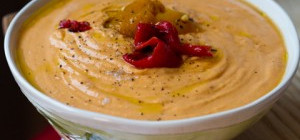 Since its development and spread throughout the world, veganism has been surrounded by various misconceptions and myths.
Since its development and spread throughout the world, veganism has been surrounded by various misconceptions and myths.
Perhaps the strongest is that vegans do not get enough protein and nutrients to maintain body functions.
The reality is that any diet, not just vegan, that is not well-balanced leads to nutritional deficiencies. Therefore, the body cannot get everything it needs to work properly.
It is indeed more challenging to establish a balanced diet for vegans, given the limited list of allowed ingredients and their availability in the usual supermarkets.
It can be an overwhelming task, but not an impossible one. This article will show you how to build a suitable vegan meal plan. So you can get an idea of how to follow a balanced diet.
What is a balanced diet?
To start a vegan eating plan it is necessary to know what a balanced diet is and how vegan ingredients fit into this concept.
A balanced diet means eating an ample variety of foods and drinks in the right proportions to maintain and boost the immune system. The meals during the day must supply the nutrients the body needs to function effectively.
In other words, you need to consume antioxidants, carbohydrates, vitamins, minerals, starches, fiber, protein, and healthy fats.
A balanced diet must include:
- Fruits.
- Foods with high content of fiber.
- Dairy or dairy alternatives.
- Proteins.
- Grains and pulses.
- Unsaturated oils.
- Plenty of fluids.
Vegan ingredients
A vegan diet consists of eating plant-based food and avoiding any product of animal origin. The allowed food includes fruits, vegetables, grains, legumes, seeds, and nuts. Prohibited ingredients are dairy products and honey.
Based on this information, it won’t be as difficult as people think about getting the nutrients in vegan diets. Although vegans do not eat meat, which is the main source of protein, plant-based foods like tofu or beans equally provide proteins and nutritional elements of the usual diets.
The list of allowed ingredients in vegan diets is big. It is very easy to combine them and create exquisite dishes.
Besides, these ingredients make it possible to cook traditional recipes like hamburgers, pizzas, and even meatloaf without meat. Get the recipe for this delicious preparation atsuccessrice.com/recipes/vegan-brown-rice-bbq-meatloaf/ and see how easy is to cook meatloaf with lentils and mushrooms.
Nowadays, vegan people have more alternative food at grocery stores. These options help strengthen their diets and ease the entire process of getting adequate nutrients.
The bottom line is that with a proper vegan diet, you can get multiple health benefits such as improved weight and protection against some chronic diseases.
A vegan balanced diet must include:
- Fruit and vegetables.
- Base foods with potatoes, orzo, couscous, rice, pasta, or whole grain products.
- Dairy alternatives such as soy drinks, yogurts, nut milk, rice milk, and cashew butter.
- Proteins from beans, grains, and pulses. Other sources of protein are tofu, tempeh, seitan, and edamame.
- Nuts and seeds like almonds, pistachios, cashews, walnuts, hazelnuts, and pine nuts.
- Healthy fats such as chia, seeds, coconut, flaxseeds, and vegetable oils.
- Fortified foods.
- Drinks such as water, tea, fruit juices, smoothies, and coffee.
Ideas for a completely vegan food plan
The success of any food plan is to know the ingredients and how to combine them. Once you create a simple menu, you can follow a simple plan and change it according to your taste.
These food plan ideas will help you to create your own.
Option 1
- Breakfast: Grain toast with peanut butter and banana
- Lunch: Pasta with lentil meatballs and salad.
- Dinner: Chickpea tacos with guacamole and Mexican rice.
- Snacks: Popcorn, or kale chips.
Option 2
- Breakfast: Coconut yogurt with walnuts, chia seeds, and blueberries.
- Lunch: Mushroom lentil loaf and Italian green beans.
- Dinner: Stuffed sweet potato and salad.
- Snacks: Dry-roasted unsalted almonds.
Option 3
- Breakfast: Quiche with tofu, broccoli, tomatoes, and spinach.
- Lunch: Spinach curry with brown rice.
- Dinner: Oat risotto with mushrooms.
- Snacks: Unsweetened coconut milk yogurt.
Option 4
- Breakfast: Avocado toast with beans.
- Lunch: Black bean veggie burger with sweet potato wedges.
- Dinner: Vegan taco.
- Snacks: Roasted edamame.
Option 5
- Breakfast: Oats with apple, pumpkin seeds, and nut butter.
- Lunch: Spicy buffalo cauliflower wings with a green salad.
- Dinner: Mac and vegan cheese and collard greens.
- Snacks: Homemade granola.







